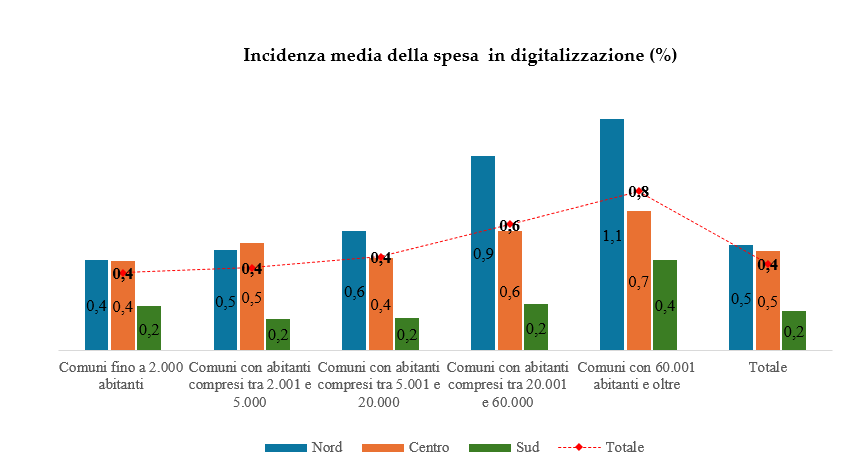
Digitization of Municipalities: what do we know?
Europe has long been focused on digital transformation and pursuing goals and milestones within the strategic program for the Digital Decade 2030, encompassing connectivity, skills, digital business and public services. Regarding the latter, according to the Digital Decade Report 2023, Italy, which ranks below the EU average in providing digital public services to citizens, "should intensify its efforts to digitalize public services. Specifically, it should accelerate the implementation of existing and planned measures." This aligns with the significant portion of resources from the National Recovery and Resilience Plan (NPRR) that our country allocates to digitalization, especially that of Public Administration (over 6 billion euros).
Therefore, in this context, what is the situation and plan for the digitalization of Italian municipalities?
Public data that allow us to delve into the issue are limited, not easily accessible for citizens, and, most importantly, have demonstrated, under analysis, several flaws, such as:
- Insufficient data to represent the comprehensive and detailed picture of digitalization in municipalities, as well as in other Public Administrations;
- Implausible data, such as very small municipalities that appear to have incurred very high per capita digitalization expenses;
- Massively extracted data from the BDAP database that are inconsistent with those published in the individual Indicator Plans included within the Transparent Administration section of the municipalities' websites;
- Missing data for a large number of municipalities.
If this is the state of data on digitalization in municipalities, it suggests that with the resources dedicated to this specific mission of the NRRP, Italy is proceeding blindly. Whitout a comprehensive mapping of digitalization in municipalities and other Public Administration at the national database level, there is a risk that, at the central institutional level, are funded projects that do not necessarily correspond to the actual needs of the proposing authority.
For this reason, despite the fragility and inconsistency of some data, downloadable from authoritative institutional databases, it was decided to use them nonetheless and to publish the results to highlight the urgency of improving the quantity and quality of accessible public data. Digitalization is a crucial innovation requirement for the development of the entire country, and this contrasts with the current blind approach, which, on the one hand, sees as positive the start of significant investments in many public administrations, and, on the other, sees as negative the persistence of a lack of deep understanding of the actual needs of municipalities, beyond those they declare.
In detail, three indicators have been identified to investigate the issue of digitalization within Italian municipalities: the incidence of digitalization expenditure, the per capita expenditure dedicated to it, and, lastly, the number of effectively digitalized services.
It is worth noting that the first two indicators mentioned above present an additional critical issue, beyond those already discussed: they are expenditure indicators, with all the limitations this entails. High expenditure on ICT (Information and Communication Technologies), indeed, cannot be automatically interpreted as an indicator of the quality of the intervention implemented.
In this initial analysis, we will examine the incidence of digitalization expenditure.